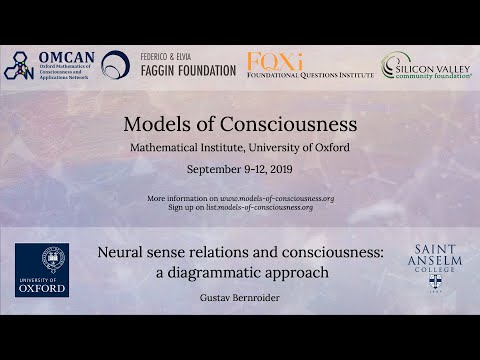Description:
Explore a diagrammatic approach to neural sense relations and consciousness in this conference talk. Delve into the concept of subject-object dualism through an inside-out or inversion relation between opposing physical domains. Examine the proposed topology for subject-object relations and its physical realization in the brain. Investigate the role of mirror symmetries in psychobiology, including sensomotory invariance in animal feelings and mirror-writing in children. Learn about the mapping of subject-object and cause-effect relations onto inversive plane geometry. Discover the extension into algebraic topology of non-orientable surfaces, including real and complex projective planes. Consider testable predictions for ionic brain function and inversion symmetries in excitable membranes. Reflect on the shift from static dimensional geometry to ideas of general covariance in modeling subjectivity. Analyze the physics of parity transformations on non-orientable surfaces and discuss the potential conserved quantity related to subjectivity and consciousness.
Read more

Neural Sense Relations and Consciousness - A Diagrammatic Approach
Add to list
#Social Sciences
#Psychology
#Consciousness
#Science
#Biology
#Neuroscience
#Physics
#Theoretical Physics
#Mathematics
#Geometry
#Topology
#Algebraic Topology